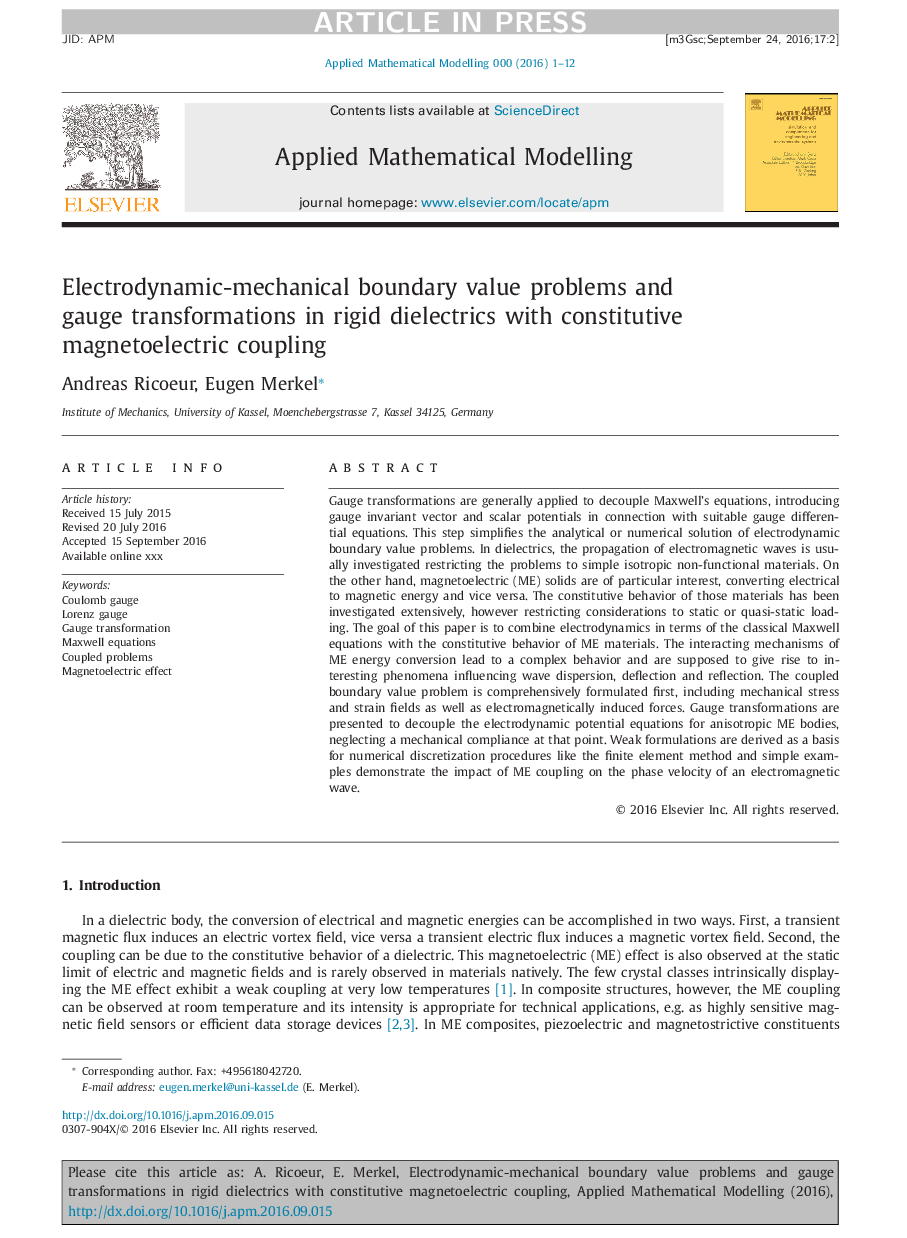| Article ID | Journal | Published Year | Pages | File Type |
|---|---|---|---|---|
| 5471371 | Applied Mathematical Modelling | 2017 | 12 Pages |
Abstract
Gauge transformations are generally applied to decouple Maxwell's equations, introducing gauge invariant vector and scalar potentials in connection with suitable gauge differential equations. This step simplifies the analytical or numerical solution of electrodynamic boundary value problems. In dielectrics, the propagation of electromagnetic waves is usually investigated restricting the problems to simple isotropic non-functional materials. On the other hand, magnetoelectric (ME) solids are of particular interest, converting electrical to magnetic energy and vice versa. The constitutive behavior of those materials has been investigated extensively, however restricting considerations to static or quasi-static loading. The goal of this paper is to combine electrodynamics in terms of the classical Maxwell equations with the constitutive behavior of ME materials. The interacting mechanisms of ME energy conversion lead to a complex behavior and are supposed to give rise to interesting phenomena influencing wave dispersion, deflection and reflection. The coupled boundary value problem is comprehensively formulated first, including mechanical stress and strain fields as well as electromagnetically induced forces. Gauge transformations are presented to decouple the electrodynamic potential equations for anisotropic ME bodies, neglecting a mechanical compliance at that point. Weak formulations are derived as a basis for numerical discretization procedures like the finite element method and simple examples demonstrate the impact of ME coupling on the phase velocity of an electromagnetic wave.
Related Topics
Physical Sciences and Engineering
Engineering
Computational Mechanics
Authors
Andreas Ricoeur, Eugen Merkel,
